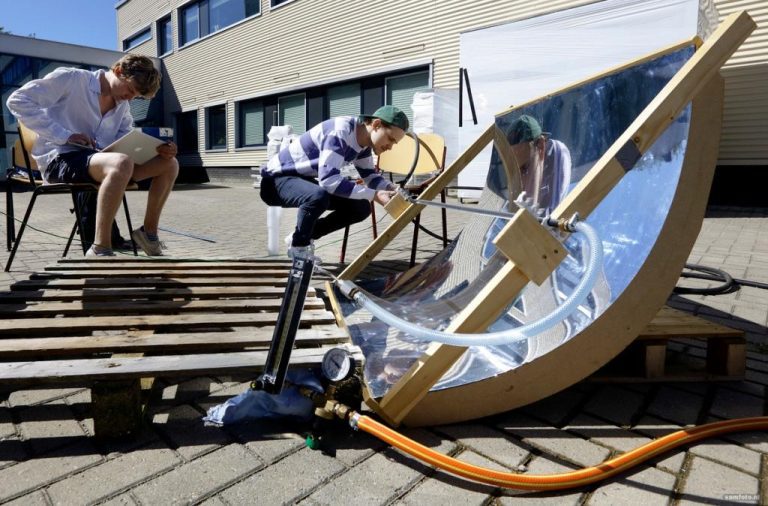
Mechanical engineering students Sweder Reuchlin (l) and Daan Kerssenmakers are working on a fine summer project: the solar water heater. The parabolic mirror concentrates sunlight on the tube in its focal point and heats the water that flows through it. This produces 9 litres of water at 55 degrees Celsius per hour. Together with David Breedijk and Stijn de Wilt they are working on their bachelor end project (BEP) as one of the 14 groups at the Process & Energy department of the 3mE faculty. In the current setup, about 45% of the sunlight is converted into heat. With a second reflector over the tube and a coating they hope to achieve 55 or 60% efficiency. Because that’s what engineers do: analyse and improve. (Photo: Sam Rentmeester).
Do you have a question or comment about this article?
j.w.wassink@tudelft.nl

Comments are closed.